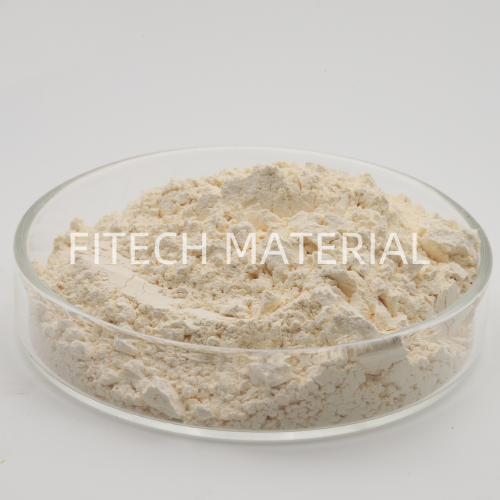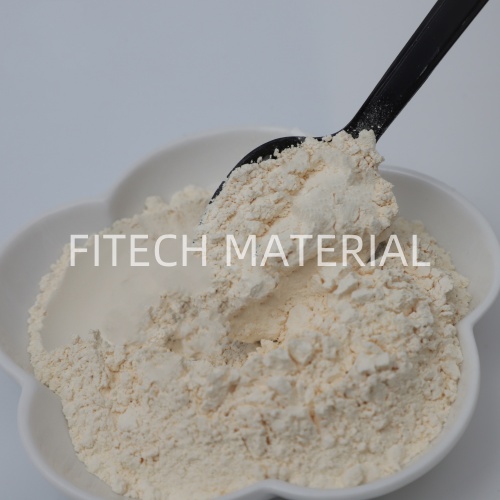Nano-cerium oxide, as an effective heat-resistant additive of silicone rubber, plays an important role in silicone rubber products. The main chain of silicon rubber molecule is composed of silicon atoms and oxygen atoms alternately, and the bond energy of silicon 2-oxygen bond is 370kJ· mol-1, which is much larger than the general carbon-2-carbon bond energy of 240kJ· mol-1, so its thermal stability is good. With the development of high and new technology, people put forward higher requirements for the heat resistance of silicone rubber. Cerium oxide with small particles to a certain extent is added to silicone rubber as a heat-resistant additive, which can prevent the oxidation cross-linking of silicone rubber side chains and improve the thermal oxidation stability of side groups.
| Effect of nano-cerium oxide dosage on hot air aging property of MVQ vulcanizate | |||||
| Items | Dosage/part | ||||
| —- | 0.5 | 1 | 2 | 3 | |
| Shore A hardness/degree | 63 | 63 | 63 | 64 | 64 |
| Tensile strength/MPa | 10.8 | 10.0 | 9.9 | 10.3 | 9.4 |
| Elongation at break/% | 381 | 340 | 333 | 341 | 321 |
| 250℃×72h after hot air aging | |||||
| Shore A hardness/degree | +13 | +8 | +9 | +8 | +8 |
| Tensile strength/MPa | -5.9 | -5.2 | -4.5 | -4.7 | -3.9 |
| Elongation at break/% | -68 | -59 | -53 | -51 | -51 |
As can be seen from the table, after aging in hot air at 250 ℃×72 h, the comprehensive physical properties of MVQ vulcanizates with nano-cerium oxide added are better than those without nano-cerium oxide, and when the dosage of nano-cerium oxide is 2 and 3 parts, The heat resistance of MVQ vulcanized rubber is significantly improved, the hardness of Shaur Type A is increased by 8 degrees, and the elongation at break is decreased by 51%. The heat resistance of MVQ vulcanizate tends to be stable with the further increase of nano-cerium oxide dosage. Under normal circumstances, the appropriate dosage is selected for the best heat resistance effect and the least influence on the comprehensive properties of vulcanized rubber. Therefore, the amount of nano-cerium oxide is selected as 2 parts.
Silicone rubber in the high temperature closed without oxygen state mainly occurs in the main chain thermal rearrangement degradation, that is, depolymerization reaction, so that the product becomes soft (or softened), resulting in the loss of mechanical strength, lose the use value. Under the conditions of high temperature aerobic environment, the oxidation of polymer side groups mainly occurs, forming alkyl radicals, and the coupling reaction of free radicals leads to an increase in the cross-chain density of the seal, which gradually hardens the product and even cracks (called hardening).
Related link: https://www.topfitech.com/heat-stabilizer-for-silicone-rubber-with-99-99min-50nm-nano-cerium-dioxide-product/
The addition of cerium oxide to silicone rubber can prevent the oxidative cross-linking of polysiloxane side chain and the cyclization of main chain. In a certain temperature range, it can prevent the free radical reaction caused by oxidation in silicone rubber, and can regenerate under the action of O2 in the air. By absorbing some trace acids or alkaline substances in the silicone rubber that can catalyze the degradation reaction, the silicone rubber plays a heat stabilization role. At the same time, the special electronic structure of cerium oxide (f electron layer is not filled) makes it easy to form complexes, which inhibit the swelling of rubber in solvent by preventing the chain segment movement of rubber molecules, thus improving the oil resistance of rubber.
Post time: Mar-06-2024




